In an unexpected move, OCAr has dismissed it's grievance against IrvineRenter without reason or apology. This action can only be interpreted as complete vindication and total victory for the forces of free speech and champions of due process.


Irvine Home Address … 46 ECHO Gln Irvine, CA 92603
Resale Home Price …… $3,399,000

Buddy you're an old man poor man
Pleadin' with your eyes gonna make you some peace some day
You got mud on your face
Big disgrace-
Somebody better put you back into your place
Queen — We Will Rock You
Back in early June, the story broke about how OC realtors seek to silence free speech by accusing IrvineRenter of lying. It set in motion a chain of events which ended in OCAr's dismissing the accusations last week.
Events that shape your life
Certain events and experiences in life can greatly alter your thinking, your actions, and your destiny. When I was in my first year of junior high, I used to walk over with my friends to a nearby restaurant in the morning before school. One day, a punk two years older than me sent a message that he was going to punch me out when I stepped out the door. His little clique was eagerly standing with him outside waiting for me to leave.
I had a decision to make. It would be a decision that impacted my life for years thereafter. I had to chose between standing my ground and likely getting pummeled or running like a coward.
I ran.
I ran hard and fast frightened like a school girl. I lived in fear for years thereafter.
It wasn't until I got to college that I decided to change my life. I got into powerlifting, and I studied Taekwondo for two and a half years prior to graduating. It was sparring in Taekwondo that really taught me the virtue of facing my fears. One day, it just clicked, and I lost my fear of confrontation. In retrospect, taking a beating in seventh grade would have been far less painful than running. As William Shakespeare said in Julius Caesar:
Cowards die many times before their deaths; The valiant never taste of death but once. Of all the wonders that I yet have heard, it seems to me most strange that men should fear; Seeing that death, a necessary end, will come when it will come.
When OCAr filed their grievance, I had a similar choice to make. I could kowtow to the schoolyard bully, or I could punch him in the nose and take my chances. For me, surrendering my power was never an option.
Realtors dismiss complaint against blogger
July 22nd, 2011, 6:00 am — posted by Marilyn Kalfus, real estate reporter
A formal grievance complaint filed by the Orange County Association of Realtors against an Irvine real estate blogger has been dismissed, the attorney for the blogger says.
.
The lawyer, Scott Sims, had accused OCAR of being at odds with laws governing free speech in filing its complaint against Larry Roberts of irvinehousingblog.com. But Sims says he was given no reason the case was stopped.
“The bottom line is that OCAR has completely backed down and dismissed the complaint, without any settlement agreement or anything of the sort,” Sims said. “This is a clear and total victory for Mr. Roberts. He looks forward to continuing to provide readers of irvinehousingblog.com with high quality analysis and insight into the housing market.”

Roberts has taken on the real estate industry and accused agents of being dishonest. But while he’s been hard on real estate agents in general, he said in a recent interview, ”I have never singled any Realtor out and called them a liar.”
The grievance didn’t say specifically what Roberts — who is not a Realtor –or anyone else did, according to Roberts, who showed a copy of it to The Orange County Register. …
The letter that Sims, a partner at Manderson, Schafer & McKinlay of Newport Beach, sent to OCAR had stated: “If OCAR does not immediately serve notices of dismissal of all charges, we will take the appropriate actions to protect Roberts’ constitutionally protected rights.”
Related:
Related on IHB:
 OC realtors seek to silence free speech by accusing IrvineRenter of lying
OC realtors seek to silence free speech by accusing IrvineRenter of lying
OCAr fails to explain charges, demands IrvineRenter’s silence
Alas, this will be the last installment in the series. Dismissing the case was the wisest choice for OCAr. The negative publicity was not helping their image, and they had nothing to gain by pushing on. I'm relieved they stopped as I was running out of good communist images for making cool cartoons.
I want to thank all my supporters to commented on the posts above and the posts over at the OC Register. And I want to give special thanks to my legal team, Scott Sims, Chris Manderson, and John Schafer, who did a wonderful job defending free speech and the right to due process in America. They are the A-Team.
.png)
As you can see from the story below, it's much more difficult to shut down a real estate website than realtors would like it to be.
Battle Waged Over Real Estate Gossip on the Web
By DIANE CARDWELL
Published: June 20, 2011
A Web site, now defunct, that claimed to expose “the underbelly of the Manhattan real estate market” by reporting on bad broker behavior, abusive landlords and run-down apartments quickly became a forum for bitter accusations against landlords, brokers, real estate industry co-workers and even roommates.
One entry, from February 2007, described a building in the East Village where the super “breaks into the apartments and steals food and money.”
Another, posted that August, complained of an agent who had arranged for someone to pose as a prospective renter and “pretend to be super-excited” about a subpar apartment to make it seem attractive.
Open house shills are a common practice. Prospective buyers are always more anxious when they believe they have competition.
Another entry, posted in January 2008, reported on a fight — rebutted in the comments section — that had broken out between agents for Prudential Douglas Elliman at a holiday party.
But when the Web site (its name is too scatological to be published here) began posting items accusing Christakis Shiamili, the founder of Ardor New York Real Estate, of anti-Semitism, domestic violence and mistreatment of his employees, it did not sit well with him. In a case that eventually went to the state’s highest court, he sued the operator of the site, Ryan McCann, who as it turned out was a competitor from the Real Estate Group of New York, now part of MNS.
In OCAr's initial complaint, they accused me of “knowingly telling lies about competitors.” That is exactly what the realtor Ryan McCann was doing. He was knowingly making false accusations against a specific person. I have never done anything of the sort. I have only made factual accusations or offered supported opinions of the activities of the organization. The difference between the two is enormous.


“I was never subject to such an attack on a personal level,” Mr. Shiamili said last week in his Midtown Manhattan office. “They seemed to be very vindictive people. And they were putting stuff not only on me but my managers. A lot of my managers were freaking out.”
Mr. Shiamili’s lawsuit was dismissed, in a close decision handed down last week by the Court of Appeals, which held that Mr. McCann and his co-defendant, Daniel Baum, were protected under the Communications Decency Act, which shields Web site operators from liability when they publish and edit material that they did not create.
Through a lawyer, Mr. McCann and Mr. Baum declined to speak about the case. But it throws open a window on the cutthroat world of residential real estate as it exists on the Internet, where the cloak of anonymity can help harsh commentary escalate.
There was much discussion in the comments on the OCAr posts about what constitutes free speech. I was accused of being a hypocrite because I sometimes censure comments here on the blog. First, I would like to point out that free speech is not an absolute. People can't yell “fire” in a crowded theater, nor can they make false accusations that could be libelous.
Second, although I run an open forum, I have the right to censure any speech I feel is inappropriate in the astute observations on my posts. People can write or say whatever they want somewhere else. I have no desire to inhibit anyone's right to speak their mind on their own blog or another forum. But this blog is like visiting my house. If people don't like the rules here, they don't need to come visit.
“Certainly in residential real estate it’s very gossipy — people want to know what’s going on in each building,” said Steven D. Sladkus, a lawyer at Wolf Haldenstein Adler Freeman & Herz. “People want to know if someone sneezes differently.”
The court decision, he said, “could certainly open the doors for a lot of people to say a lot of nasty things.”
So what? People who say nasty things only reveal how nasty they are. It's the price we all pay in an free society. Sometimes buried in the nastiness is an uncomfortable truth. People need exposure to the truth.
Recently, he said, he asked Curbed, a neighborhoods and real estate blog, to take down negative comments about a real estate board president that he said were untrue; the site’s operators agreed but made it clear they were not required to do so.
Wimps. They should never have acquiesced. It will only embolden their critics in the future.
According to Mr. Shiamili’s complaint, filed about a week after the contentious comments went up, the Web site published “false and defamatory statements of fact” that were “intended to injure Shiamili’s reputation and destroy Ardor.”
The comments, from an individual who used an anti-Ardor pseudonym and claimed to be an Ardor agent, accused Mr. Shiamili of terrorizing agents, keeping too much of their commissions, and referring to blacks, Hispanics and Jews as “those people.”
The crux of Mr. Shiamili’s argument is that Mr. McCann took the comments and repackaged them as a post, prefacing them with the statement, “and now it’s time for your weekly dose of hate,” and the challenge, “We are so. not. afraid.”
It should also be pointed out that any comments made on this blog are the property of the IHB, and we can use them as we see fit. I occasionally quote from the astute observations because often the comments are very astute and should be shared with others.
Mr. McCann also put up a picture portraying Mr. Shiamili as Jesus Christ, with a headline calling him, “King of the Token Jews,” according to the complaint. That, in turn, set off a round of accusations from other posters, including one accusing Mr. Shiamili of cheating on his wife. He says all the accusations are untrue.
I like being edgy. Sometimes I go over the top. It's unavoidable when you dance on the edge. However, the shades of grey only exist on the margins. There are comments and images that are simply out-of-bounds. The examples described above are out-of-bounds. How can you tell over-the-top from out-of-bounds? Justice Potter Stewart once said of pornography, “I know it when I see it.” Out-of-bounds is obvious when you see it.

What's interesting about this case is that the judges were willing to permit out-of-bounds expression because they so valued freedom of speech. If the realtor in this case lost, what chance did OCAr have of shutting me down?
Mr. McCann and Mr. Baum filed a motion to dismiss the case, arguing that the Web site dealt in matters of opinion, not fact, and was clearly satiric in nature, given the frequent trading of inane insults. In addition, they said, the case should be dismissed because the defendants did not write the comments, but only published them, exempting them from liability under the Communications Decency Act.
In 2009, Justice Marcy S. Friedman of State Supreme Court in Manhattan dismissed their motion, ruling that the case could proceed. That decision was overturned by an Appellate Division panel, which dismissed Mr. Shiamili’s complaint. Last week, the Court of Appeals affirmed that ruling, 4 to 3.
“We follow what may fairly be called the national consensus,” wrote Judge Carmen Beauchamp Ciparick, adding that the Court of Appeals saw the Decency Act “as generally immunizing Internet service providers from liability for third-party content wherever such liability depends on characterizing the provider as a ‘publisher or speaker’ of objectionable material.”
Judge Ciparick noted that the comments about Mr. Shiamili were “unquestionably offensive and obnoxious,” but added that the site’s operators had “not become ‘content providers’ by virtue of moving one of the comments to its own post.”
Chief Judge Jonathan Lippman, in a dissenting statement, struck a note of caution, suggesting that the Web site was more than “a passive conduit of this defamatory material,” and adding, “An interpretation that immunizes a business’s complicity in defaming a direct competitor takes us so far afield from the purpose of the CDA as to make it unrecognizable.”
Mr. Shiamili has not decided what steps, if any, to take next, but he said his business had suffered because of the comments on the site.
“They weren’t only attacking me, they were attacking other companies,” he said. “It was a means to diminish their market share,” he added, referring to the companies the site criticized.
OCAr could make the argument that I am defaming their business except for one small detail. The opinions I express are not defamatory; they are truthful. If I have negative things to say about realtors, it's because they've earned it.
Not to worry, all's well that ends well.

Some people never capitulate
The owner of today's featured property paid cash for the lot, and borrowed about $2,000,000 to build the property. He is not a distressed seller, but he clearly wants to sell. But he isn't ready to “give it away.” Notice the series of price reductions followed by a price hike then another series of price reductions. Who is he kidding? Why would anyone offer more than the lowest number in that range?
Property History for 46 ECHO Gln
| Date | Event | Price | Source | ||
|---|---|---|---|---|---|
| Jul 21, 2011 | Price Changed | $3,399,000 | SoCalMLS #S613556 | ||
| May 10, 2011 | Price Changed | $3,599,000 | SoCalMLS #S613556 | ||
| Apr 06, 2011 | Price Changed | $3,499,999 | SoCalMLS #S613556 | ||
| Feb 28, 2011 | Price Changed | $3,750,000 | SoCalMLS #S613556 | ||
| Jan 26, 2011 | Price Changed | $3,695,000 | SoCalMLS #S613556 | ||
| Nov 05, 2010 | Price Changed | $3,798,000 | SoCalMLS #S613556 | ||
| Oct 18, 2010 | Price Changed | $3,498,000 | SoCalMLS #S613556 | ||
| Oct 05, 2010 | Price Changed | $3,489,000 | SoCalMLS #S613556 | ||
| Aug 29, 2010 | Price Changed | $3,689,000 | SoCalMLS #S613556 | ||
| Jul 30, 2010 | Price Changed | $3,499,000 | SoCalMLS #S613556 | ||
| Jul 22, 2010 | Price Changed | $3,599,000 | SoCalMLS #S613556 | ||
| Jul 15, 2010 | Price Changed | $3,699,000 | SoCalMLS #S613556 | ||
| May 24, 2010 | Price Changed | $3,869,000 | SoCalMLS #S613556 | ||
| Apr 17, 2010 | Listed (Active) | $4,149,000 | SoCalMLS #S613556 | ||
| Apr 17, 2010 | – Delisted (Expired) | — | Inactive SoCalMLS #7 | ||
| Apr 05, 2010 | – Price Changed | * | Inactive SoCalMLS #7 | ||
| Mar 21, 2010 | – Price Changed | * | Inactive SoCalMLS #7 | ||
| Mar 08, 2010 | – Price Changed | * | Inactive SoCalMLS #7 | ||
| Feb 12, 2010 | – Price Changed | * | Inactive SoCalMLS #7 | ||
| Feb 05, 2010 | – Price Changed | * | Inactive SoCalMLS #7 | ||
| Feb 01, 2010 | – Price Changed | * | Inactive SoCalMLS #7 | ||
| Jan 11, 2010 | – Price Changed | * | Inactive SoCalMLS #7 | ||
| Dec 02, 2009 | – Listed (Active) | * | Inactive SoCalMLS #7 | ||
| Dec 01, 2009 | – Delisted (Expired) | — | Inactive SoCalMLS #6 | ||
| Nov 03, 2009 | – Price Changed | * | Inactive SoCalMLS #6 | ||
| Aug 18, 2009 | – Relisted (Active) | — | Inactive SoCalMLS #6 | ||
| May 20, 2009 | – Listed | * | Inactive SoCalMLS #6 | ||
| May 19, 2009 | – Delisted | — | Inactive SoCalMLS #5 | ||
| Mar 08, 2009 | – Price Changed | * | Inactive SoCalMLS #5 | ||
| Feb 26, 2009 | – Price Changed | * | Inactive SoCalMLS #5 | ||
| Jan 20, 2009 | – Listed | * | Inactive SoCalMLS #5 | ||
| Jan 19, 2009 | – Delisted | — | Inactive SoCalMLS #4 | ||
| Jan 15, 2009 | – Price Changed | * | Inactive SoCalMLS #4 | ||
| Nov 26, 2008 | – Listed | * | Inactive SoCalMLS #4 | ||
| Nov 18, 2008 | – Delisted | — | Inactive SoCalMLS #3 | ||
| Nov 05, 2008 | – Price Changed | * | Inactive SoCalMLS #3 | ||
| Oct 26, 2008 | – Price Changed | * | Inactive SoCalMLS #3 | ||
| Jul 29, 2008 | – Price Changed | * | Inactive SoCalMLS #3 | ||
| Jun 30, 2008 | – Price Changed | * | Inactive SoCalMLS #3 | ||
| Jun 25, 2008 | – Price Changed | * | Inactive SoCalMLS #3 | ||
| Oct 27, 2007 | – Listed | * | Inactive SoCalMLS #3 | ||
| Aug 25, 2007 | – Delisted | — | Inactive SoCalMLS #2 | ||
| Aug 02, 2007 | – Listed | * | Inactive SoCalMLS #2 | ||
| Jul 24, 2007 | – Delisted | — | Inactive SoCalMLS #1 | ||
| Apr 22, 2007 | – Listed | * | Inactive SoCalMLS #1 | ||
This property has been on and off the market for as long as I have been writing the IHB. He is on listing #8 and has been for the last year. If he is waiting for price appreciation at the high end to catch up to him, he may have this listed for a very, very long time.
——————————————————————————————————————————————-
This property is available for sale via the MLS.
Please contact Shevy Akason, #01836707
949.769.1599
sales@idealhomebrokers.com


Irvine House Address … 46 ECHO Gln Irvine, CA 92603
Resale House Price …… $3,399,000
Beds: 4
Baths: 4
Sq. Ft.: 6000
$566/SF
Property Type: Residential, Single Family
Style: Two Level, Tuscan
View: Canyon, City Lights, Hills
Year Built: 2007
Community: Turtle Rock
County: Orange
MLS#: S613556
Source: SoCalMLS
On Redfin: 461 days
——————————————————————————
On Redfin:
Maybe the lightest, brighest home in Shady Canyon. No dark, heavy feel. Ground floor has 2 bedroom suites, and 2nd floor has 2 bedroom suites including the lavish master suite. Plans available to modify 2nd floor to add 5th bedroom with no exterior changes. Two-story tower room can be office or coverted into bedroom suite, or loft. Master bedroom has 2 huge closets, sitting room w/ fireplace, plus exercise room with private entrance. Tuscany country exterior with sophisticated light, bright interior. Lots of French Doors and Windows looking South out over the Irvine Nature Preserve that will never be developed. Large yard with room for pool (easy access from yet to be built home next door). Very rustic, natural landscaping for a true country feel and privacy. Quiet, private location on low traffic street with high value homes. Use your smaller home, custom lot, or investment properties as down payment.
——————————————————————————————————————————————-![]()
Proprietary IHB commentary and analysis
I think this realtor has taken the light and bright meme as far as it can go.
Resale Home Price …… $3,399,000
House Purchase Price … $3,000,000
House Purchase Date …. 5/12/2006
Net Gain (Loss) ………. $195,060
Percent Change ………. 6.5%
Annual Appreciation … 2.4%
Cost of Home Ownership
————————————————-
$3,399,000 ………. Asking Price
$679,800 ………. 20% Down Conventional
4.48% …………… Mortgage Interest Rate
$2,719,200 ………. 30-Year Mortgage
$589,093 ………. Income Requirement
$13,745 ………. Monthly Mortgage Payment
$2946 ………. Property Tax (@1.04%)
$833 ………. Special Taxes and Levies (Mello Roos)
$708 ………. Homeowners Insurance (@ 0.25%)
$0 ………. Private Mortgage Insurance
$500 ………. Homeowners Association Fees
============================================
$18,733 ………. Monthly Cash Outlays
-$1870 ………. Tax Savings (% of Interest and Property Tax)
-$3594 ………. Equity Hidden in Payment (Amortization)
$1125 ………. Lost Income to Down Payment (net of taxes)
$445 ………. Maintenance and Replacement Reserves
============================================
$14,839 ………. Monthly Cost of Ownership
Cash Acquisition Demands
——————————————————————————
$33,990 ………. Furnishing and Move In @1%
$33,990 ………. Closing Costs @1%
$27,192 ………… Interest Points @1% of Loan
$679,800 ………. Down Payment
============================================
$774,972 ………. Total Cash Costs
$227,400 ………… Emergency Cash Reserves
============================================
$1,002,372 ………. Total Savings Needed
——————————————————————————————————————————————————-
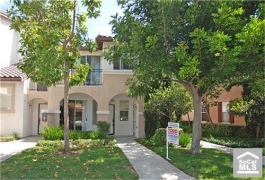
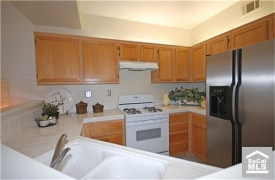










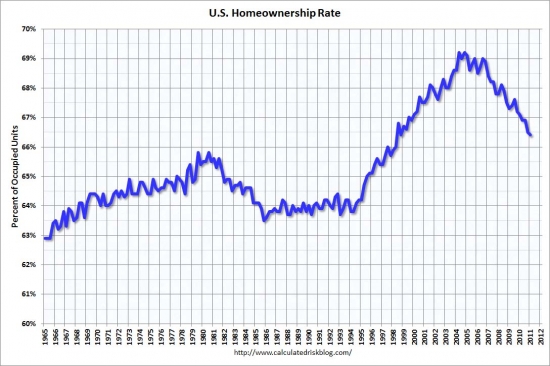


.png)

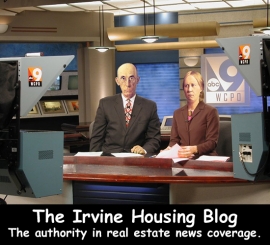
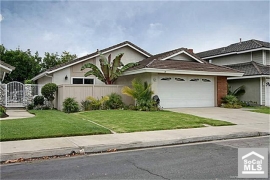






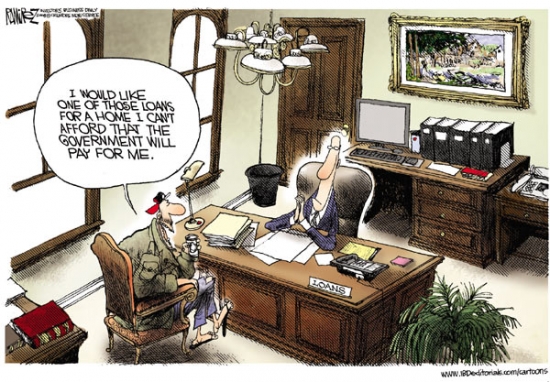

























 FAMILY ROOM WITH WET-BAR THAT OVERLOOKS A $500,000, RESORT STYLE PALM TREE STUDDED POOL FEATURING A HUGE ROCK SLIDE AS WELL AS A 5 SEAT SWIM UP BAR. THIS HOME TRULY IS AN ENTERTAINERS DELIGHT WITH ITS OWN OUTDOOR KITCHEN INCLUDING A BUILT IN BARBEQUE, MINI FRIDGE AND RECESSED GROTTO WITH TV AND FULL BATH. THE POOL AREA ALSO FEATURES BUILT IN GAS AMBIENT HEATERS AS WELL AS A ROUND FIREPIT WITH SEATING. THIS HOME IS A MUST-SEE WITH TOO MANY UPGRADES TO LIST!! THE ESTATE IS FEATURED ON BRAVO'S HIT TELEVISION SHOW, 'THE REAL HOUSEWIVES OF ORANGE COUNTY. ' THIS HOME SHOWS WELL AND WILL SELL FAST!
FAMILY ROOM WITH WET-BAR THAT OVERLOOKS A $500,000, RESORT STYLE PALM TREE STUDDED POOL FEATURING A HUGE ROCK SLIDE AS WELL AS A 5 SEAT SWIM UP BAR. THIS HOME TRULY IS AN ENTERTAINERS DELIGHT WITH ITS OWN OUTDOOR KITCHEN INCLUDING A BUILT IN BARBEQUE, MINI FRIDGE AND RECESSED GROTTO WITH TV AND FULL BATH. THE POOL AREA ALSO FEATURES BUILT IN GAS AMBIENT HEATERS AS WELL AS A ROUND FIREPIT WITH SEATING. THIS HOME IS A MUST-SEE WITH TOO MANY UPGRADES TO LIST!! THE ESTATE IS FEATURED ON BRAVO'S HIT TELEVISION SHOW, 'THE REAL HOUSEWIVES OF ORANGE COUNTY. ' THIS HOME SHOWS WELL AND WILL SELL FAST! 

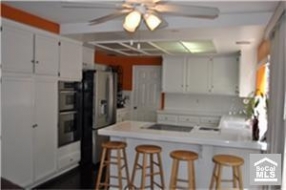







.png)






.jpg)
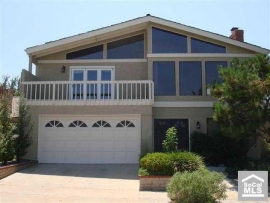
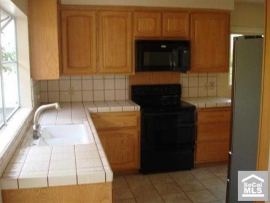







.png)
.jpg)
